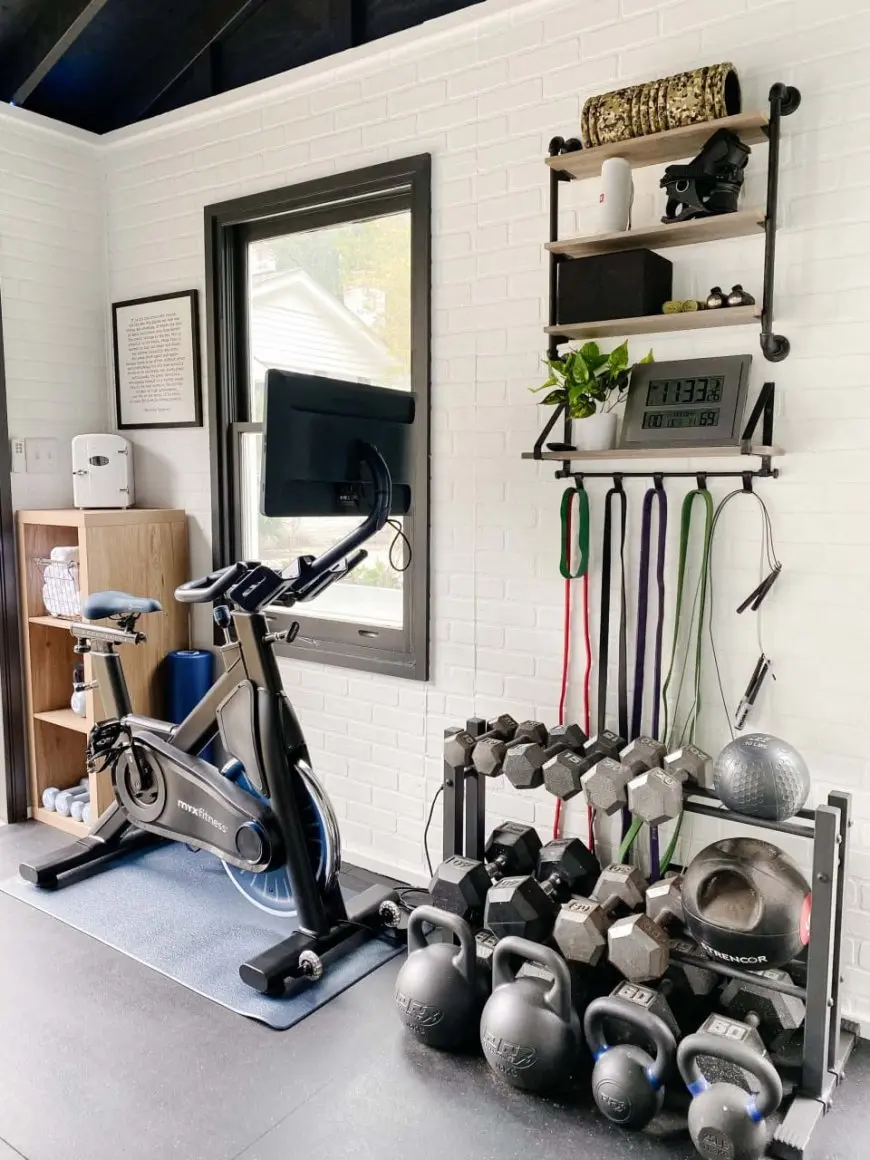Creating a home gym doesn’t have to break the bank. With the right approach, you can design a functional workout space tailored to your fitness goals without spending a fortune. Whether you're a beginner or a seasoned fitness enthusiast, this guide will help you build an affordable home gym using smart strategies and versatile equipment.
Benefits of a Home Gym
Before diving into the details, let’s explore why having a home gym is a worthy investment:
- Convenience: No commuting to the gym saves time and effort.
- Cost-Effective: Over time, it can save you money on gym memberships.
- Flexibility: You can work out anytime, regardless of your schedule.
- Privacy: Exercise in a comfortable and personal environment.
Steps to Building a Home Gym on a Budget
1.Define Your Fitness Goals
The first step is to identify your fitness needs. Are you focusing on strength training, cardio, flexibility, or a combination of all three? Knowing your goals will help you prioritize which equipment to invest in.
2.Choose the Right Space
Select a dedicated area in your home for workouts. It could be a spare room, garage, basement, or even a corner of your living room. Ensure the space has good ventilation, sufficient lighting, and enough room for movement.
3.Start with Essential Equipment
You don’t need expensive machines to get started. Begin with affordable, multi-functional items:
- Resistance Bands: Lightweight, portable, and versatile for strength training.
- Dumbbells or Adjustable Weights: Opt for adjustable dumbbells to save space and money.
- Yoga Mat: Ideal for stretching, yoga, and floor exercises.
- Jump Rope: A cost-effective option for cardio workouts.
- Kettlebell: Great for a range of exercises, from squats to swings.
- Stability Ball: Perfect for core workouts and improving balance.
4.DIY and Repurpose Items
Get creative with everyday items to save money:
- Use filled water bottles, sandbags, or backpacks with books as makeshift weights.
- A sturdy chair or bench can serve as a step-up platform.
- Old towels or furniture sliders can be used for core and leg exercises.
5.Look for Secondhand Equipment
Buying used equipment is an excellent way to cut costs. Check local online marketplaces, thrift stores, or gym closures for discounted items like treadmills, weight benches, or spin bikes.
6.Invest in Multi-Functional Equipment
If your budget allows, prioritize equipment that serves multiple purposes, such as:
- Adjustable Benches: Useful for strength training and incline exercises.
- Pull-Up Bars: Can be mounted in doorways for upper body workouts.
- Compact Cardio Machines: Look for foldable treadmills or budget-friendly rowing machines.
7.Use Bodyweight Exercises
You don’t need any equipment for a great workout. Exercises like push-ups, squats, lunges, planks, and burpees are effective and require no investment.
8.Set a Budget and Stick to It
Determine how much you’re willing to spend and prioritize purchases based on your fitness goals. Start small and build your home gym over time.
9.Embrace Free Resources
Take advantage of free online workout videos, fitness apps, and tutorials. Many platforms offer professional guidance on how to use your equipment and structure effective workouts.
10.Organize Your Space
Keep your gym tidy to maximize space and maintain motivation. Use storage solutions like shelves, hooks, or bins to store equipment when not in use.
Cost-Saving Tips
- Wait for Sales: Watch for discounts during holidays or clearance events.
- Bundle Purchases: Some stores offer discounts when buying multiple items.
- DIY Projects: Build your own plyometric boxes, weight racks, or workout platforms using inexpensive materials.
Sample Budget for a Basic Home Gym
Equipment Approximate Cost
| Resistance Bands $15-$30
| Adjustable Dumbbells $50-$100
| Yoga Mat $10-$25
| Jump Rope $10-$20
| Kettlebell $20-$40
| Pull-Up Bar $25-$50
| Total $130-$265
Building a home gym on a budget is entirely achievable with careful planning and creativity. By focusing on essentials, repurposing items, and seeking out deals, you can create a space that supports your fitness journey without straining your wallet. Remember, the key is consistency—your commitment to regular workouts matters more than the equipment you own.








